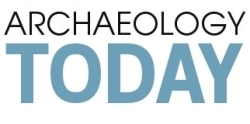
April 6th, 2014
Researcher Suggests Famous Ancient Inca Monumental Complex Exhibits Astronomical Values
Is it just pseudoscience, or something that will stand the test of additional research? According to one researcher’s analysis, there was an astronomically-based purpose to the curious yet incredibly precise way the massive stones of the 600-year-old Sacsayhuamán terrace walls were constructed high above and overlooking the ancient Inca capital of Cusco in Peru. (Popular Archaeology)
Archaeology | A single tooth can tell a lot about ancient people
What can you learn from a single tooth? Quite a lot, actually. University of Toronto archaeologist Susan Pfeiffer and an international team of scholars are recovering DNA as well as chemical isotopes from ancient American Indian teeth to sort out what happened in the northern Iroquoian communities of southern Ontario between the 13th and 16th centuries. (The Columbus Dispatch)
Archaeological dig uncovers some of St. Louis’ first homes
A cool discovery underneath the Poplar Street Bridge where crews are preparing to replace two ramps.
A MoDot archaeological dig has uncovered evidence of two homes. The St. Louis Post-Dispatch reports the log homes were built around 1770, only six years after St. Louis was founded. (KPLR St. Louis)
Ancient stormy weather: World’s oldest weather report could revise bronze age chronology
An inscription on a 3,500-year-old stone block from Egypt may be one of the world’s oldest weather reports — and could provide new evidence about the chronology of events in the ancient Middle East. A new translation of a 40-line inscription on the 6-foot-tall calcite block called the Tempest Stela describes rain, darkness and “the sky being in storm without cessation, louder than the cries of the masses.” (Science Daily)





